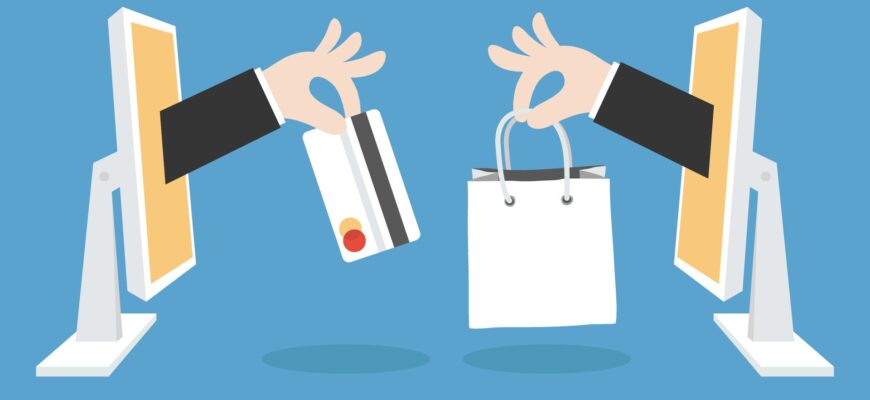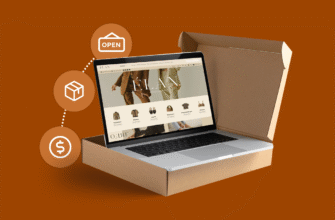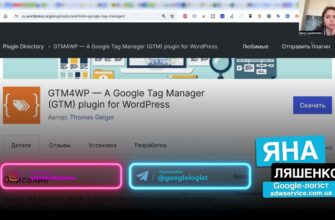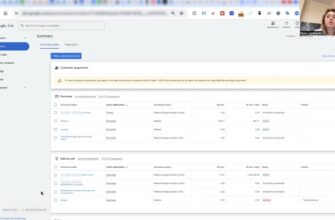- How to prepare for increased traffic to your online store?
- Bonus: 22 Ways to Increase Traffic to Your Online Store
- 14 ways to increase traffic to your online store
- Contextual advertising
- Google Shopping
- SEO optimization
- Social media account management
- Which social network should you choose?
- What content should you publish?
- What are the advantages of promoting on social media?
- Targeted advertising on social media
- Email newsletters
- No need to buy ready-made email address databases
- The letter should be of interest to the recipient.
- Set up automated mailings
- Price aggregators
- Bulletin boards
- Blogging
- Shoot and post videos
- Promote your personal brand
- Add user-generated content
- Integration with bloggers
- Maintaining a YouTube channel
- SMS mailings
- Referral programs
- Affiliate marketing
Attracting traffic is the main task for any online business. Today, it is not enough to simply create a website, because without proper promotion, customers will not even know about it. In the face of fierce competition in e-commerce, without a well-thought-out strategy for attracting visitors, even the highest quality products risk going unnoticed.
And simply deciding to “run an ad” will no longer work. For stable, long-term traffic growth, you need a whole system of promotion that combines a wide variety of internet marketing tools.
SEO, contextual advertising, content marketing, SMM, email newsletters, affiliate programs — each of these methods can significantly increase traffic to an online store. But the main point is to choose the tactics that are best suited to the specifics of a particular business.
How many calls and sales will I get by ordering contextual advertising from you?
I need to calculate the conversion of my website Describe
the task
in the application
Calculate potential ad revenue Google
contextual advertising calculator
Today we will figure out how to increase traffic to your online store — we will look at specific and proven ways to increase traffic. This will help turn your website from a “deserted island” into a place bustling with life and a constant stream of customers.
How to prepare for increased traffic to your online store?
Before launching marketing activities aimed at increasing traffic to your online store, be sure to audit your website and fix any identified issues. Otherwise, your resources will be wasted.
Before increasing traffic to your online store:
- Analyze the loading speed. If pages load slowly, even the highest quality traffic will not convert into sales. Only the bounce rate will grow, because most visitors will close the page without waiting for it to load completely. Attract traffic to the site only after making sure that all flaws have been fixed and the loading speed is consistently high.
- Improve usability. The lack of a responsive version, poorly structured content, illogical navigation, and software errors all shape the user experience and therefore negatively affect website traffic.
- Make your offer clear. List the benefits that visitors will receive when they place an order with you. They should not have to search and dig through the details, but should understand from the first page why your offer is better than others.
- Remove annoying ads. Visitors react negatively to large numbers of animated banners and pop-ups. Intrusive advertising can scare them away, and then the investment in marketing activities will not pay off.
- Use the services of a reliable hosting provider. If you expect traffic to increase significantly, make sure your provider offers high-quality hosting. After all, the load on the server where the site is hosted will increase.
Bonus: 22 Ways to Increase Traffic to Your Online Store
14 ways to increase traffic to your online store
An increase in the number of visitors is not always accompanied by a proportional increase in sales. Some companies, whose online stores have thousands of visitors, make less than a dozen sales per day. Others can boast fifty orders with up to 250 visitors per day. The reason for this significant difference is related to the difference in traffic quality.
To increase traffic to your online store and achieve the necessary sales levels, focus your efforts on your target audience—the people who will be interested in your offer. To do this, use one or more of the following sources:
Contextual advertising
The fastest way to increase traffic to an online store is through paid traffic. Even small businesses today have the opportunity to effectively use Google Ads advertising tools:
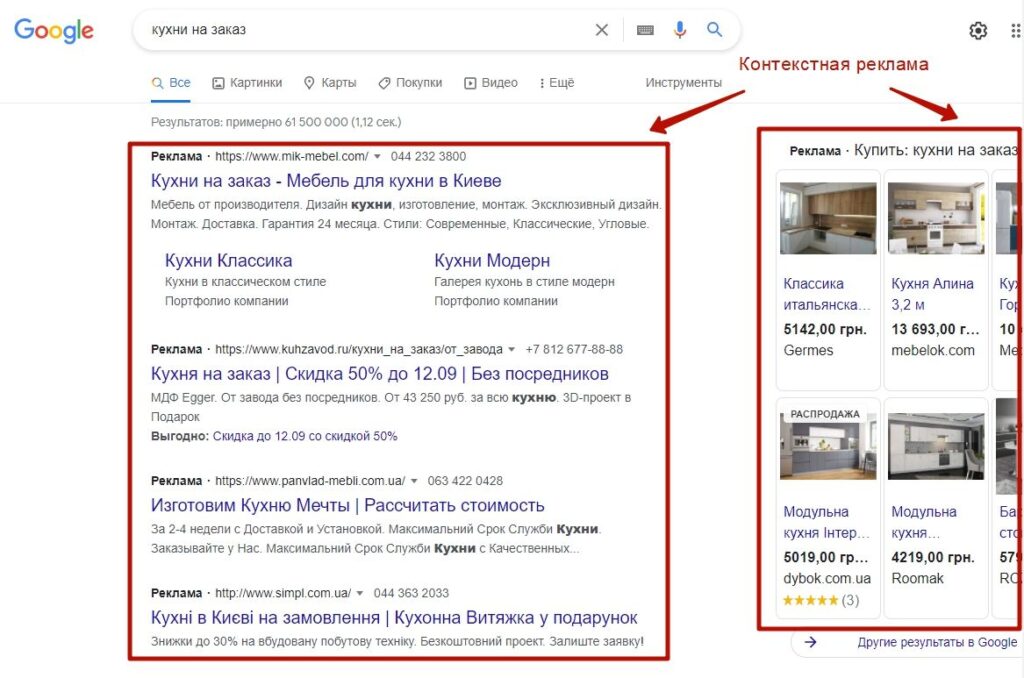
Contextual advertising is displayed as a highlighted block above the main Google search results. Visitors immediately see the offer, as they are potential buyers who have entered a targeted query.
Information! This type of advertising is based on the PPC model—you only pay for clicks, calls, or video views.
An advertising campaign can be organized in one of three ways:
- Advertisements in search results. A relevant link to the advertiser’s website is displayed in a highlighted block above the organic results. This type of advertising has the best conversion rate. It helps not only to attract traffic, but also to increase sales.
- Contextual media network. Advertiser banners, videos, and links are placed on partner websites. This option allows you to effectively convey information about your company or offer to your target audience.
- Remarketing. Ads are shown to people who have already shown interest in your products or store. In terms of conversion rates, this method of attracting traffic is second only to classic search ads.
Important! To increase the return on advertising investment, it is necessary to monitor campaign performance indicators and optimize them regularly.
If contextual advertising is new to you and you have no previous experience in this area, you will need to put in a lot of effort and spend time learning how to set up a high-quality campaign. Remember that gaining experience as a beginner can cost you wasted advertising budget.
Therefore, if you have never worked with Google Ads, take a training course on contextual advertising or sign a contract with a professional agency.
Google Shopping
If the niche you work in is highly competitive and you offer products at attractive prices, use product ads in Google search. In this case, it is the most effective way to increase the number of visitors and orders.
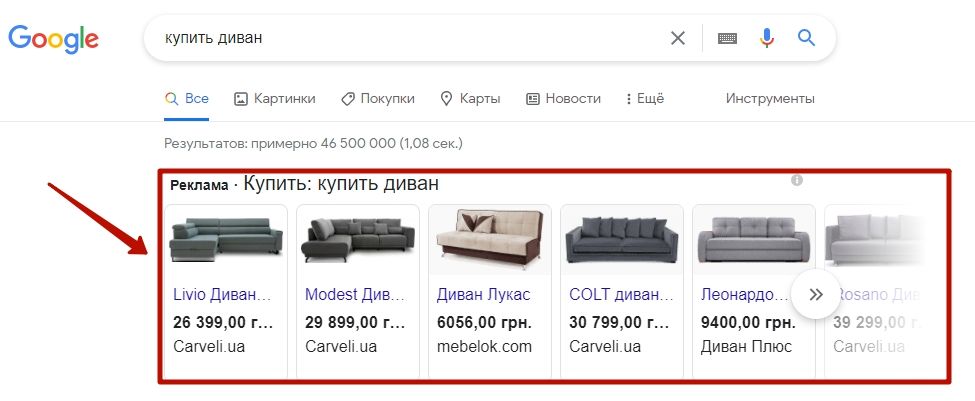
Advertisements are quite informative and attract attention. Ad clicks are relatively inexpensive and have a good conversion rate. The service allows you to create ads automatically using content from your online platform. All you need to do is add the relevant product feed to your Google Merchant Center account.
SEO optimization
In order for users to come to the site from organic search results, it must be optimized according to certain requirements.
It is important to monitor the following positions:
- Uniqueness. All descriptions, product or category specifications, articles, and texts must be unique. There are many services available to check your website for this criterion. If your content’s uniqueness is low, you will not be able to reach the top positions in search results.
- Semantics. Text content, metadata, and other elements of a web resource should be created with consideration for the semantic core, which is a systematic list of key queries. During the collection process, information from various databases is used, which is then checked for relevance and sorted. Without distributing queries across pages, full-fledged website promotion is impossible.
- Meta data. All pages of the web resource, whether it is the main page, a page for a specific product category, or a product card, must have meta tags (title, description) specified.
- Key phrases. Articles, descriptions, metadata, and titles should include words and phrases from the semantic core, which should be divided into clusters. Don’t forget about images; fill in the alt tag for them.
- Logical structure. The structure of an online store must be thought out down to the smallest detail, with each product corresponding to a specific category. If the products on the site differ from each other in terms of certain characteristics, create convenient filters for them. For example, for a furniture store, you can create a filter for “white sofas.” On a page with this filter, the user will only see white sofas, which is very convenient if that is what they are looking for.
Social media account management
Many sellers develop social media profiles alongside their websites. And for good reason, as this is a reliable way to increase traffic to an online store. Social networks allow you to add your product range to your store’s page and announce various promotions and contests. However, users will still have to go to the website to make a purchase.
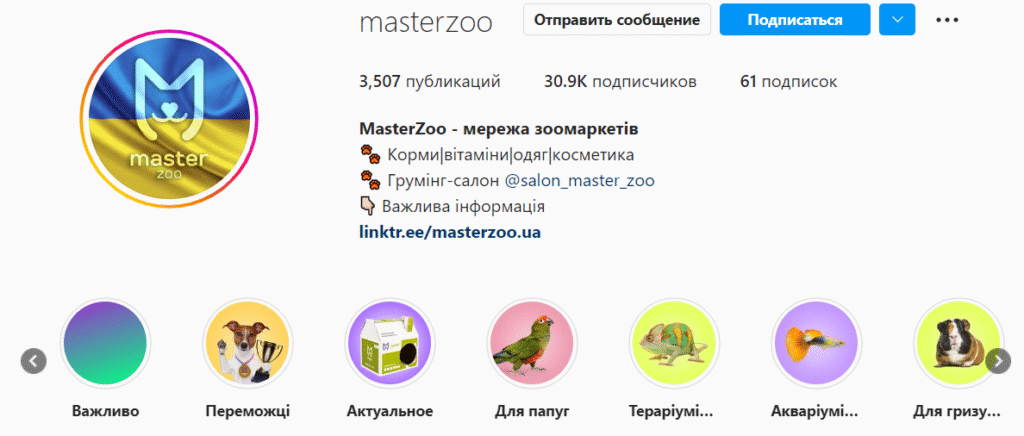
In addition to attracting additional traffic, social networks will help build a loyal community around your brand. But simply posting photos of products from time to time is not enough. You need a well-thought-out content strategy. We will help you develop one right now.
Which social network should you choose?
The choice of a particular social network depends on the specifics of the niche, target audience, and content format:
- Instagram is ideal for visually appealing products such as fashionable clothing, cosmetics, and gadgets. The emphasis is on high-quality photos and videos.
- Facebook is suitable for the B2C segment. Sales through communities, targeted advertising, and active interaction with customers in comments work effectively here.
- TikTok is a relatively new but very promising platform. The key to success is creating native entertainment content without overt advertising.
- Pinterest is a good choice for companies involved in design, fashion, interior design, and similar visual niches. Users come here for inspiration and ideas.
What content should you publish?
Followers want to see something truly valuable and interesting on a company’s social media page. Here are a few formats that work well:
- Behind the scenes. Show the process of creating a product, packing orders, and introduce your audience to your team. People like to get a glimpse behind the scenes of a business.
- Solving customer problems. Instead of urging people to buy your product, create useful content. For example, a series of posts titled “How to choose the perfect laptop for school” or “5 mistakes to avoid when choosing an electric kettle” will be much more useful than mundane product reviews.
- Interactive features. Contests, prize draws, polls, and challenges increase engagement and attract new subscribers.
- Current trends and memes (if this format is appropriate for your brand). Companies with a good sense of humor often inspire more trust.
- User-generated content. Photos and videos from real customers are powerful social proof that boosts loyalty.
What are the advantages of promoting on social media?
- Huge reach of potential customers. Social media has a multi-million audience.
- No need to hire outside specialists. Social media can be developed by an in-house marketer or the owner of a small online store.
- An additional free source of traffic to the website. Referrals from social networks can account for a significant percentage of total sales.
Targeted advertising on social media
Popular social networks are visited by millions of users who can be motivated to take conversion action by identifying groups that match virtually any potential buyer profile.
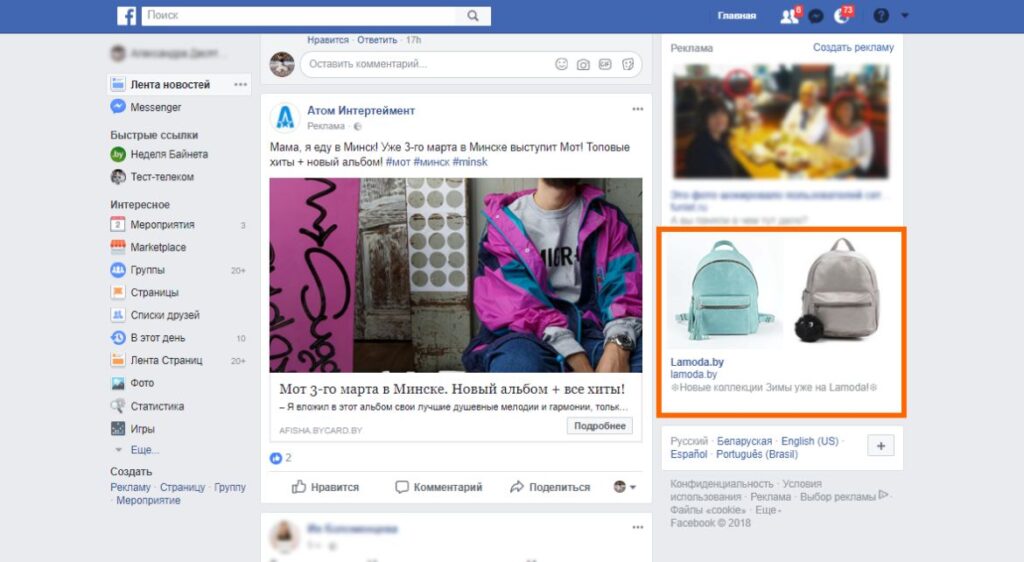
The success of such an advertising campaign directly depends on how well the audience is selected (by gender, age, family status, location, community involvement, interests, language proficiency, etc.). In addition, the creatives used are also important—whether they will be positively perceived by the selected user groups.
Tip! It is unlikely that you will hit the target right away, so to find the most effective combinations, you need to test several formats, CTAs, and landing pages. Even professional marketers with extensive experience do this.
Services such as Facebook and Instagram have a self-learning mechanism built in. They optimize active campaigns on an ongoing basis. However, at the initial stage, it is necessary to install a pixel (analytics system) on the website pages, set goals, and allocate a specific budget for traffic testing.
Email newsletters
Unlike advertising, where you pay for each click, when you launch an email campaign, you work with a database of subscribers who have already shown interest in your brand. However, it is important not to simply bombard them with the same type of sales emails — this is a sure way to end up in the spam folder.
To ensure that users really want to read your emails, follow our recommendations.
No need to buy ready-made email address databases
In most cases, this approach is a waste of money. These subscribers are not interested in your offer. What’s more, mass unsubscribes and complaints can lead to your domain being blocked. Instead, focus on organically building a base of loyal subscribers.
Here are some proven tactics:
- Add a subscription form to your website. Motivate visitors to leave their email address by offering a valuable bonus — a discount on their first order, a free checklist, or a useful guide.
- Use pop-ups to invite users to subscribe to your newsletter. However, do not overdo it—aggressive pop-ups are more likely to annoy users than convert traffic.
- Create high-quality content. If you run an expert blog or conduct educational webinars, offer exclusive materials in exchange for a subscription.
- Integrate subscriber collection on order pages, feedback forms, and online consultant widgets.
- Organize sweepstakes and contests that require participants to provide their email address. Prizes should be interesting and valuable to your audience.
The letter should be of interest to the recipient.
For email marketing to really work, it is important that recipients are interested in opening your newsletter and find truly valuable content there. Instead of intrusive advertising, send useful information — and people will look forward to your emails and be more willing to make purchases.
Here are some tips on how to make your newsletters interesting and effective:
How many calls and sales will I get by ordering contextual advertising from you?
I need to calculate the conversion of my website Describe
the task
in the application
Calculate potential ad revenue Google
contextual advertising calculator
- Think carefully about the subject line. Instead of flashy headlines like “Mega sale! Everything for 99 hryvnia!” use intriguing and useful topics, such as “5 ways to extend the life of your smartphone” or “How to choose the perfect dress for a summer party.”
- Personalize your content. Include the recipient’s name in the email, take into account their previous purchases and behavior on the website. Personalized content is perceived as more valuable and relevant.
- Focus on the benefits. Your emails should not only sell, but also help your subscribers. Share expert advice, life hacks, and selections of the best products. Such content increases loyalty and trust in the brand.
Set up automated mailings
To save time and effort, set up a series of automated emails for key triggers:
- Welcome letter immediately after subscription. Thank the user, tell them about the benefits of subscribing, and delight them with a small bonus.
- Abandoned cart reminder. This is one of the most effective triggers. If a visitor has added something to their cart but has not completed the purchase, gently remind them after a while.
- Post-purchase mailing. Send the customer instructions on how to use the product, additional tips, or a request to leave a review. This will help maintain customer loyalty in the future.
- Reactivate “dormant” subscribers. If a user hasn’t opened your emails in a long time, try to perk them up with a special offer, useful content, or a personal discount.
Price aggregators
Price aggregators collect data on products from different sellers. Using these services, buyers can compare prices, check product availability and delivery terms, and read reviews. Price aggregators help online store owners attract additional traffic.
Consumers who use such systems usually know exactly what they want to buy. They are already prepared to make a purchase and plan to do so. All that remains is to determine where to conclude the transaction, i.e., find a suitable seller.
In Ukraine, Freemarket, Hotline, Nadavi, Price.ua, E-katalog, and other systems are popular. By posting information about your product on them, you will get maximum coverage of price aggregator users.
Tip! Not all such systems will provide you with the same effect. Sales through some of them may not even cover the costs incurred for placement in the database. In this regard, it is recommended to evaluate the interim results some time after you start working with the platform.
The number of clicks and conversion rate are the most informative indicators, but it is also important to consider the cost per click. Calculate how much it costs to attract one customer in each system and compare the figures to determine which platforms work best.
Bulletin boards
It is not possible to generate high-quality traffic from classifieds boards for all products. However, for online catalogs of furniture, plumbing equipment, or building materials, resources such as Olx.ua or Izi.ua can be a good source of new targeted visitors:
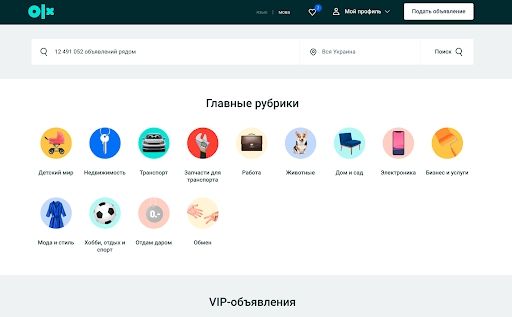
In some cases, online stores use such platforms to publish paid advertisements for their products. It is difficult to determine how effective such placement will be, but it is worth trying this channel.
Blogging
Today, a blog for an online store is no longer a fashionable trend, but a necessity. Search engines give preference to sites with high-quality and relevant content. And users appreciate resources that help them make decisions.
Before buying a product, people usually look for information about it. And if your article about choosing an uninterruptible power supply comes up in their search results, there is a good chance that they will visit your website and make a purchase.
If you publish truly useful and interesting content, your blog can become the main source of visitors for your online store. You can use product reviews, life hacks for using them, and advice on choosing products as content.
Yes, traffic from a blog usually converts worse than commercial traffic. But its volume can be many times higher. Therefore, with the right approach, blogging definitely pays off. The main thing is to add new articles regularly. This way, search engines will see that the site is constantly being updated and will rank it higher in search results. And casual visitors will gradually become a regular audience.
If you decide to start a blog, try to follow these tips.
Shoot and post videos
Many users find it easier to watch videos than read long texts. Videos can be watched in the background while doing other things. Yes, creating high-quality videos requires more time and resources than writing articles. But these efforts will pay off in increased traffic and audience engagement.
While your competitors stick to text content, try reviewing products in short videos on YouTube, Instagram, or TikTok. These videos are like magnets for sales. People are more likely to watch a one-minute video that clearly shows how to use a product than read a long description.
Let’s say you sell kitchenware. Instead of dry texts of 1,000 characters, shoot a video in the style of “What are the three types of knives that every kitchen needs?” Such content will not only attract more traffic, but also stimulate sales.
Promote your personal brand
Develop the personal brand of the content author. Let the creator of articles and videos for the blog become a recognizable expert in their niche. To do this, publish the author’s name, photo, and brief biography at the beginning of each piece of content. Don’t forget to set up the appropriate Schema.org microdata on the website. In videos, place a photo or image of the presenter on the cover.
As recognition increases, the author will be perceived by the audience as an expert. Their opinion will be trusted more, and their recommendations will be perceived as guidance for action. This is especially relevant for niche topics where there is not much content or experts.
Add user-generated content
User-generated content often works more effectively than any advertising. People trust the opinions of other buyers more than they trust brands. That’s why it’s extremely important not only to collect customer reviews and stories, but also to actively use them in your content marketing.
Here are some practical ideas for integrating user-generated content (UGC) into your blog and videos:
- Create a section called “Tested by customers” where you can show real-life experiences of using your products. Ask buyers to record a short video review or unbox the product.
- Launch a contest for the best product review with valuable prizes for the winners. Clearly define the criteria and deadlines, and actively promote the contest through email newsletters and social media.
- Compile collections of customer reviews and stories in the form of articles and videos. Add your own comments, but focus primarily on customer opinions.
- Post photos and videos from customers in product cards. Authentic content from real people will increase trust in the product and encourage purchases.
- Encourage customers to leave reviews with bonuses and discounts.
User-generated content not only strengthens trust in your brand, but also creates additional points of contact with your audience. After all, people will visit your website more often to see new reviews and ratings.
Integration with bloggers
Collaborating with bloggers on social media or blog platforms will help increase traffic to your online store:
- Guest posts. Find a popular blog in your niche and offer them an article from your in-house expert. The article should be high-quality, substantial, and interesting. Then there is a chance that the blogger will agree to publish it for free—after all, posting high-quality content is beneficial for the site’s search engine ranking. Include a link to your online store in the article. This way, you can attract the blogger’s audience.
- Product reviews. Offer bloggers your product or service for free. Ask them to post a review on their social media accounts in return. This can be very effective, especially if you collaborate with opinion leaders.
- Native integration. A blogger posts a video on their channel in which they use your product—for example, ordering airline tickets through your app or food delivery. Such advertising is perceived neutrally by users, there is no banner blindness, and it is difficult to skip.
Maintaining a YouTube channel
Today, YouTube has a huge audience in Ukraine, with around 20 million users from our country visiting the site every day. Undoubtedly, your online store’s target audience is among them.
Create your own channel on a video hosting site and post themed videos there: reviews of new products, instructions for use, unboxing videos, and related informational content. You can include a link to your online store in the video description.
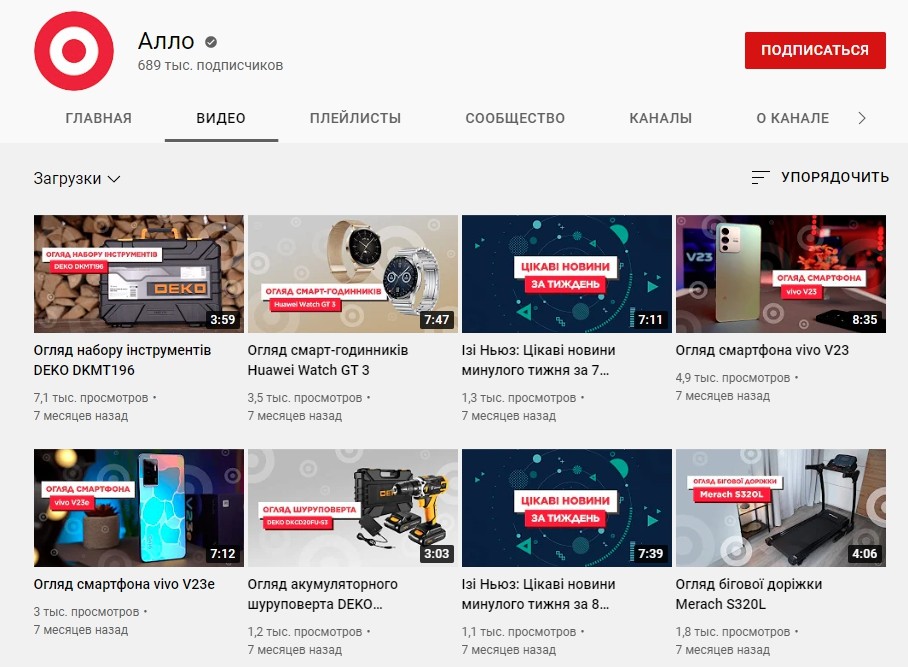
An audience that is not yet familiar with your product may find such a video in a YouTube search, become interested, go to the website, and make a purchase. Viewers will ask questions in the comments, which can be answered on the website or directly under the video.
Tip! Remember that in addition to the content of your video, sound and image quality are important for success on YouTube. Buy high-quality modern equipment and a backdrop for filming. Ideally, you should rent a studio if possible. This is not a cheap source of traffic, but it is very profitable in the long run.
SMS mailings
You can send SMS messages to your customer base who have already placed orders in your online store. Notify them about new discounts and promotions. Let them know about your New Year’s sale or Black Friday.
To automate the process, you can use special services that send messages via SMS, Viber, or Telegram. It is important to target your audience accurately—sending messages to a broad database will be ineffective and will not yield any results.
This method of communicating with customers has many advantages:
- inexpensive (compared to other promotion methods);
- wide coverage – almost every citizen of Ukraine has a telephone number, and some even have two;
- Informative – if the message is sent via Viber, you can send photos in addition to text.
Referral programs
The essence of this promotion method is to launch a loyalty program where customers receive bonuses or discounts for each friend they refer. This stimulates word-of-mouth advertising and helps increase traffic to the online store without huge advertising costs.
To launch a referral program, think through your reward system. These could be discounts on the next purchase, free products for a certain number of referrals, or cashback for purchases made by invited friends. The main thing is that the reward is truly valuable and motivates customers to actively recommend your online store.
Referral marketing works well in niches where purchases are made regularly: cosmetics, accessories, service subscriptions, sporting goods. If customers return to you again and again, it will be beneficial for them to invite friends and receive bonuses.
Affiliate marketing
The essence of this approach is that you provide your partners with unique links or promo codes, and they receive a percentage of each customer they bring in. This approach works particularly well in niches with high average check sizes or regular repeat purchases (cosmetics, electronics, clothing, online education).
To launch an affiliate program, the first thing you need to do is decide on the size and terms of the reward. The commission should be attractive enough for partners, but at the same time feasible given your margins. Also, think about what exactly you will pay for — clicks, applications, sales, or a percentage of revenue.
Next, you just need to find reliable partners to promote your online store. Here are a few proven channels:
- Niche bloggers and influencers. Offer them the opportunity to test your products and share honest reviews with their audience. As an incentive, you can provide an exclusive discount promo code for their subscribers.
- Websites with reviews and product selections. Many platforms regularly publish articles such as “The Best Smartphones of 2025.” Negotiate to have your product included in such lists with an affiliate link.
- Thematic forums and communities. Find platforms where your target audience is already gathered and politely offer cooperation to the most active participants. But be careful — aggressive advertising can be negatively perceived by users.
- Affiliate networks. If you don’t have the time or resources to search for partners yourself, join specialized platforms such as Admitad, Leadbit, etc. They take care of all the organizational work, connecting advertisers and webmasters.

